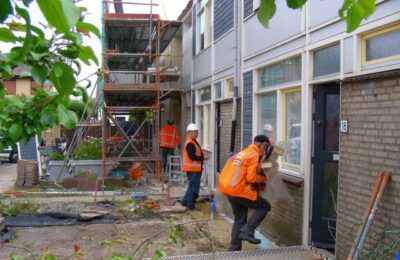 We agree with Tribune that local public transport should be free.
We agree with Tribune that local public transport should be free.
Becca Massey-Chase makes the case.
This might sound like a radical proposal that policymakers would never support or enact. It’s not. In fact, it’s already a reality in more than a hundred towns and cities worldwide, including more than 30 in the US and 20 in France, as well as in Poland, Sweden, Italy, Slovenia, Estonia, and Australia. Across the UK, older people already have access to free local transport. In Scotland, young people have access to it, too.
Better public transport that’s more affordable or free is something that the public want to see. We’ve heard this from the communities that we’ve spoken with through the work of the commission; the Department for Transport has heard it through their own research, too.
There are many arguments for why we need to reduce the numbers of cars on our roads. Cars, even electric ones, produce emissions, are made from precious natural resources, cause congestion, take up space, create noise, make our roads less safe, and reduce social interactions. And a transport system with the car at the top of its hierarchy isn’t a fair one.
If you’re on a low income, you are less likely to own a car but more likely to pay the price for others driving them. You’re more likely to suffer from polluted air, traffic accidents, and community severance (roads forming physical barriers across neighbourhoods); strikingly, a child living in a poorer area in Scotland is three times more likely to be injured by road traffic than one living in one of the richer areas. Meanwhile, the average car in the UK is parked for 96 percent of the time. We could be a lot more efficient with our use of space and resources.
Improving, and making affordable, public transport services provides people with a much-wanted alternative to owning a car. Alone, it won’t deliver the scale of shift away from cars we need, but it will immediately deliver benefits in terms of increasing people’s ability to get around and access what they need, including good jobs. It provides immediate benefits to people who can’t afford a car, or who struggle to manage to pay for a car that they feel forced into owning because of a deficit of other options.
Our current system also affects some groups more than others. Women, for example, are not well served by the status quo: transport investment decisions tend to prioritise commuting long distances to work, rather than shorter local trips to the shops or to childcare, which are more often made by women. And over a third more women travel by bus than men.
Our bus network is vital to many people’s lives, connecting the most vulnerable in society to things they care about. Our bus routes and services are most in decline in areas that disproportionately impact more rural or disadvantaged users. Investing in public transport means making things easier for people who are often overlooked by transport planners and policy makers.
The main questions people ask about the idea of anything being provided for free at the point of use are 1) ‘How much is it going to cost?’, and 2) ‘Who’s going to pay for it?’
There’s an important context to the cost question. First, the government’s current prioritisation of cars means a massive roads investment strategy, with a £27 billion budget. Some of this is needed to maintain and repair roads, but there’s plenty earmarked for new roads, which the government thinks we need partly because they’re predicting an increase in car numbers – up to ten million more by 2050. That forecast isn’t a done deal, though – not if we focus instead on making it possible to live a good life without needing to own a car. The money is there. It’s a matter of how we choose to spend it.
Additionally, improving our public transport system has a key role to play in decarbonising transport. And tackling the climate crisis is money well spent. This crisis is urgent: we need to act now, and doing so is cost-effective. It will cost more in the long run if we don’t.
So, how much would free local public transport cost? For less than £3.5 billion a year the government could operate a free bus system in Great Britain (this is equivalent to the annual revenue that bus tickets generated pre-pandemic). But we should also be looking to extend and improve these services, particularly in rural areas where public transport has such an important role to play in supporting people to get about without the need for a car. So we’re probably talking more like £6 billion – but let’s not forget that £27 billion roads budget.
Local authorities also need to be empowered to raise more funds locally, alongside fairer funding settlements for all regions of the UK. From business taxes, as were temporarily used in London to raise money for Crossrail, to charges on employers who provide workplace parking, which have supported the tram and bus systems in Nottingham, there are a plethora of mechanisms for raising funds – and doing so fairly, as long as businesses and residents are engaged with properly.
Shifting journeys out of cars and onto public transport can help to reduce emissions, especially while we still have so many heavily polluting vehicles on the road. It’s also a more efficient use of space and resources; with fewer cars on the roads and parked on streets, there would be more space for nature, and safer places to walk and cycle.
In making local journeys free, we can also open up access to opportunities within the local area for more people. In offering greater mobility, we can increase people’s autonomy, widen their choices and increase the opportunities available to them. And we can do that for the people who need it the most.



Public transport needs to be free. I first argued this in debates at school in the 1960s, and the need is even clearer now. But if we want people to use it in preference to private transport, we also have to campaign for it to be safe, accessible, reliable, and available around the clock. We need many more people employed, with good conditions and decent wages, in providing this service. We need to ensure that no part of the country is cut off from public transport, or reliant on two buses a week. And we need to end the stigma – epitomised by Margaret Thatcher’s crass comments – against public transport, and the equation of car ownership with success.
Free public transport is an essential part of the effort to cut GHG emissions. One thing that needs acknowledging though is that this could result in higher costs for road maintenance. The reason is that heavy vehicles cause much more damage to roads than lighter ones: the commonly stated factor is that the damage is proportional to the fourth power of the axle weight*, so a ten tonne bus would cause 10,000 times more damage than a 0ne tonne car (if both have two axles). One possible way of reducing the problem would be to use trolley buses rather than battery power, as the latter are incredibly heavy. This is practical for cities, but if buses are to serve rural areas better, what is needed is smaller, much more frequent vehicles. Nationalising the whole system would allow for proper integration of city and rural networks.
https://www.insidescience.org/news/how-much-damage-do-heavy-trucks-do-our-roads